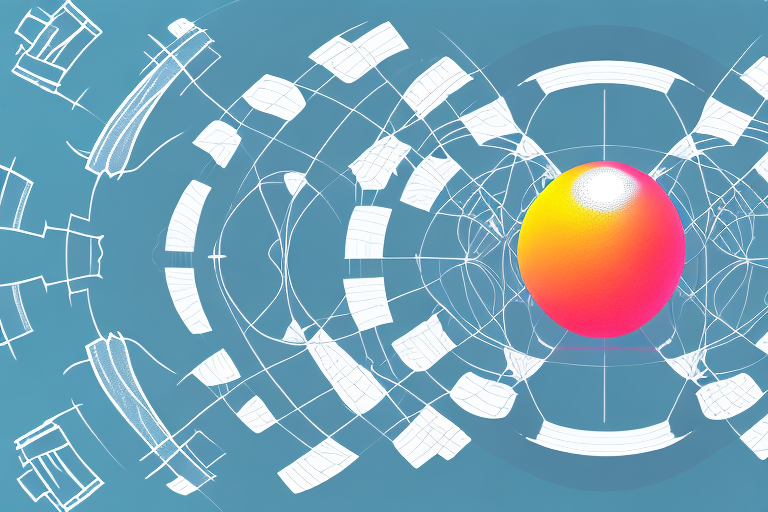If you’ve been experiencing pain or discomfort in your chest area, then you might want to consider using a Trigger Point Ball on your outer pecs. A Trigger Point Ball is a small, dense ball that you can use to apply pressure to specific areas of your body, which can help to relieve tension, pain, and soreness.
What are Trigger Point Balls and How Do They Work?
Trigger Point Balls are designed to apply pressure to specific areas of the body, which can help to relieve tension, pain, and soreness. When you apply pressure to a trigger point, you stimulate blood flow to the area, which can help to bring nutrients and oxygen to the muscles, and help to remove waste products.
To use a Trigger Point Ball, you simply place the ball on the area where you’re experiencing pain, and then use your body weight to apply pressure to the ball.
Trigger Point Balls come in different sizes and densities, allowing you to choose the right ball for your needs. The smaller balls are great for targeting specific areas, such as the feet or hands, while larger balls are better for larger muscle groups, such as the back or legs. Additionally, some Trigger Point Balls have textured surfaces, which can provide a deeper massage and help to release knots and adhesions in the muscles.
Understanding the Anatomy of the Outer Pecs
The chest muscles are comprised of the pectoralis major and pectoralis minor muscles, which run from the top of the chest down to the lower ribcage. The outer pecs, in particular, are located on the outer edge of the chest region.
The outer pecs are responsible for movements such as pushing and pressing, and are heavily involved in exercises such as bench press and push-ups. Developing the outer pecs can help to create a more defined and sculpted chest, while also improving overall upper body strength and stability.
Common Causes of Pain in the Outer Pecs
Pain in the outer pecs can be caused by a number of factors, including poor posture, overuse of the muscles, and injuries. People who spend long hours hunched over a computer, for example, are at risk of developing pain and tension in the outer pecs.
Another common cause of pain in the outer pecs is participating in activities that involve repetitive arm movements, such as throwing a ball or swimming. These activities can put strain on the muscles in the outer pecs, leading to pain and discomfort. It is important to stretch and warm up properly before engaging in these activities to prevent injury.
How to Use a Trigger Point Ball on the Outer Pecs for Pain Relief
If you’re experiencing pain or discomfort in your outer pecs, then you might want to consider using a Trigger Point Ball to help relieve the tension and pain. Here’s how to do it:
- Find a Trigger Point Ball that’s the appropriate size and density for your needs.
- Lie down on your back, with your knees bent and your feet flat on the ground.
- Place the Trigger Point Ball under your outer pec, with the ball resting on your chest muscle.
- Use your body weight to apply pressure to the ball, allowing it to sink into your muscle.
- Hold the ball in place for 20-30 seconds, or until you feel the muscle release.
- Move the ball to another area of your outer pec, and repeat the process.
It’s important to note that while using a Trigger Point Ball can be effective in relieving pain and tension in the outer pecs, it’s not a substitute for seeking professional medical advice. If you’re experiencing chronic or severe pain, it’s always best to consult with a healthcare provider to determine the underlying cause and appropriate treatment plan.
Step-by-Step Guide to Using a Trigger Point Ball Safely and Effectively
If you’ve never used a Trigger Point Ball before, it’s important to understand how to use it safely and effectively. Here’s a step-by-step guide:
Step 1: Start by lying on your back, with your knees bent and your feet flat on the ground.
Step 2: Place the Trigger Point Ball under your outer pec, with the ball resting on your chest muscle.
Step 3: Use your body weight to apply pressure to the ball, allowing it to sink into your muscle.
Step 4: Hold the ball in place for 20-30 seconds, or until you feel the muscle release.
Step 5: Move the ball to another area of your outer pec, and repeat the process.
Step 6: It’s important to note that you should avoid using the Trigger Point Ball on any bones, joints, or areas with thin skin. Stick to using it on larger muscle groups, like your back, glutes, and legs.
Tips for Maximizing the Benefits of using a Trigger Point Ball on the Outer Pecs
If you want to get the most out of using a Trigger Point Ball on your outer pecs, then here are some tips to keep in mind:
- Start slowly, and gradually increase the amount of pressure you apply to the ball.
- Focus on breathing deeply and relaxing your muscles.
- Use the ball regularly, but don’t overdo it.
- Be consistent with your practice, and make it a part of your self-care routine.
- Consider using other tools, such as foam rollers or massage therapy, in conjunction with the Trigger Point Ball for maximum benefit.
It’s important to note that using a Trigger Point Ball on your outer pecs can be uncomfortable or even painful at first. However, this discomfort should subside as you continue to use the ball regularly. If you experience any sharp or intense pain, stop using the ball and consult with a healthcare professional. Additionally, it’s important to maintain proper form and posture while using the ball to avoid any strain or injury to your neck or shoulders.
Precautions to Take When Using a Trigger Point Ball on the Outer Pecs
While using a Trigger Point Ball on your outer pecs can be a great way to relieve pain and tension, it’s important to take some precautions to avoid injury. Here are some key things to keep in mind:
- Start slowly, and don’t apply too much pressure at once.
- Avoid placing the Trigger Point Ball directly on your ribs or other bony areas.
- Avoid using the Trigger Point Ball on areas that are injured or inflamed.
- If you experience pain or discomfort, stop using the Trigger Point Ball immediately.
- Consult with a healthcare professional if you have any underlying medical conditions that could be affected by Trigger Point Ball therapy.
Alternative Techniques for Alleviating Pain in the Outer Pecs
If using a Trigger Point Ball isn’t right for you, there are other techniques you can try to alleviate pain in the outer pecs. Some options include:
- Stretching exercises that target the chest muscles.
- Massage therapy to relieve tension and promote relaxation.
- Posture correction exercises to improve alignment and prevent future pain.
- Physical therapy to address underlying injuries or conditions.
- Acupuncture or other alternative therapies.
When to Seek Professional Help for Persistent Pain in the Outer Pecs
If you’ve been experiencing persistent pain in your outer pecs, despite using home remedies such as Trigger Point Balls or stretching exercises, then it may be time to seek professional help. A healthcare professional can help to identify the underlying cause of your pain and recommend appropriate treatment options.
Remember, pain in the outer pecs can be a sign of a more serious condition, so it’s important to take your symptoms seriously and seek treatment as needed. With the right care and attention, you can find relief from pain and tension in your outer pecs and enjoy a healthier, happier life.





